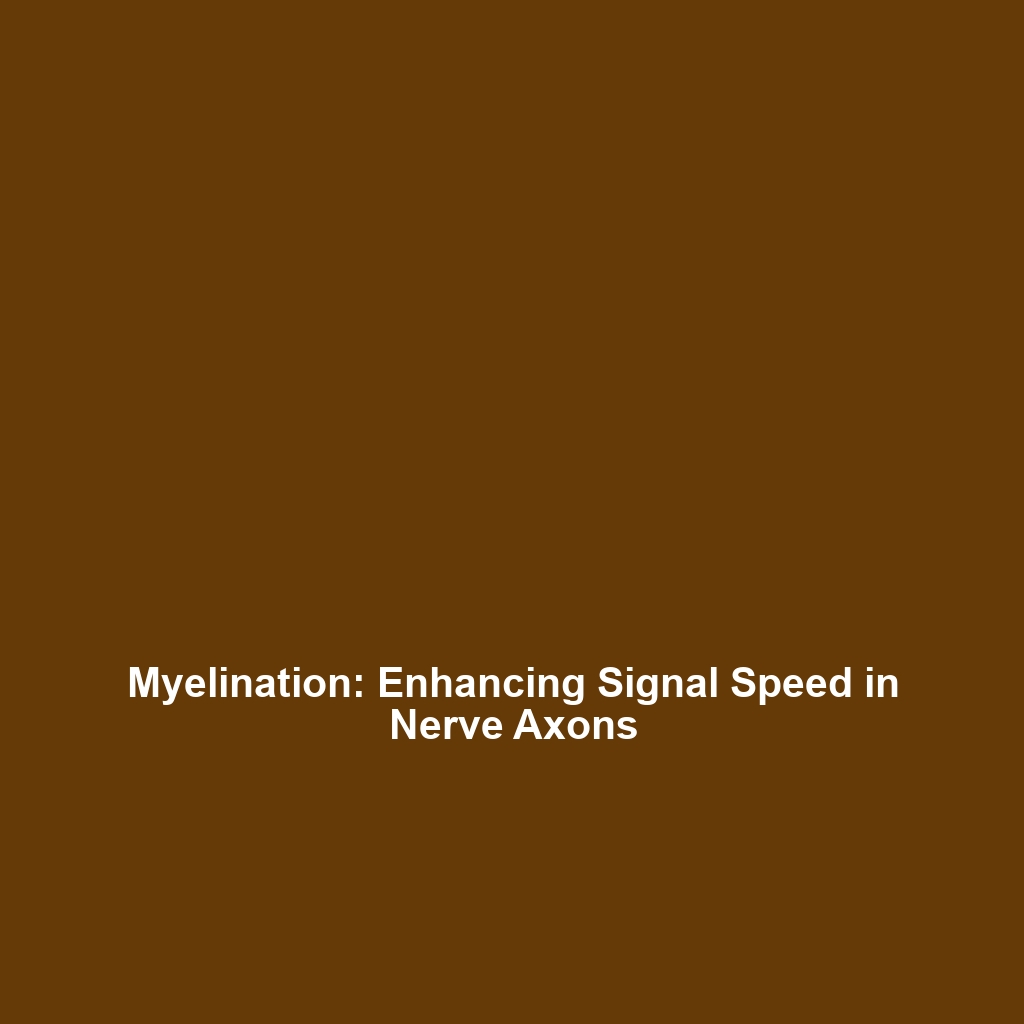Myelination and Synaptic Pruning in Biomechanics
Introduction
Myelination and synaptic pruning are vital processes in the development of the nervous system, crucial for enhancing neural performance and efficiency. In the context of biomechanics, these processes significantly influence how muscles and neural pathways communicate and operate. Understanding myelination—which involves the formation of a protective myelin sheath around nerve fibers— and synaptic pruning—which refines synaptic connections—provides insight into neural adaptability and learning. This article delves into the intersection of these biological processes and biomechanics, elucidating their importance in human movement and motor control.
Key Concepts
Myelination
Myelination refers to the process where oligodendrocytes in the central nervous system and Schwann cells in the peripheral nervous system wrap axons with myelin. This fatty substance increases the speed of electrical impulses along the nerve cells, which is essential for rapid communication between the brain and muscles. Enhanced myelination improves reflexes and coordination, thereby optimizing biomechanical efficiency.
Synaptic Pruning
Synaptic pruning is a selective process where excess neurons and synapses are eliminated to enhance the efficiency of neuronal transmissions. This process occurs predominantly during critical periods of brain development, shaping motor skills and cognitive function. The careful balance of synaptic strength and elimination is crucial for learning and memory, directly impacting biomechanical skills and athletic performance.
Applications and Real-World Uses
The processes of myelination and synaptic pruning have numerous applications in biomechanics, providing insights into motor training and rehabilitation. Here are a few notable examples:
- Rehabilitation Strategies: Understanding how myelination affects recovery can guide therapeutic techniques for motor skills rehabilitation after injuries.
- Athletic Training: By leveraging knowledge of synaptic pruning, coaches can develop training regimens that optimize neural pathways for improved muscle coordination and performance.
- Neuroprosthetics: Myelination principles are applied in developing advanced prosthetic limbs that integrate seamlessly with the nervous system, enhancing biomechanics for amputees.
Current Challenges
Despite the advancements in understanding myelination and synaptic pruning, several challenges remain in studying these processes within biomechanics:
- Lack of comprehensive models to accurately simulate myelination effects on motor control.
- Ethical implications and technical barriers in studying synaptic pruning in human subjects.
- Understanding the variability in myelination processes between individuals and its effects on biomechanics.
Future Research and Innovations
Future research surrounding myelination and synaptic pruning is poised to revolutionize biomechanics. Innovations such as advanced imaging techniques and computational modeling could enhance our understanding of these processes, leading to:
- Targeted therapies for neurodegenerative diseases that impact motor function.
- Breakthroughs in neuroadaptive physical training techniques, improving training efficacy.
- Development of smart prosthetics that respond dynamically to synaptic feedback, optimizing movements.
Conclusion
In summary, myelination and synaptic pruning are fundamental to the efficiency of neural communication, directly influencing biomechanics and motor performance. Continued research in this area promises to yield innovative applications in rehabilitation, athletic training, and neuroprosthetics. To explore more about the exciting developments in biomechanics, consider reading our articles on motor control and neuroplasticity in athletes.

Leave a Reply